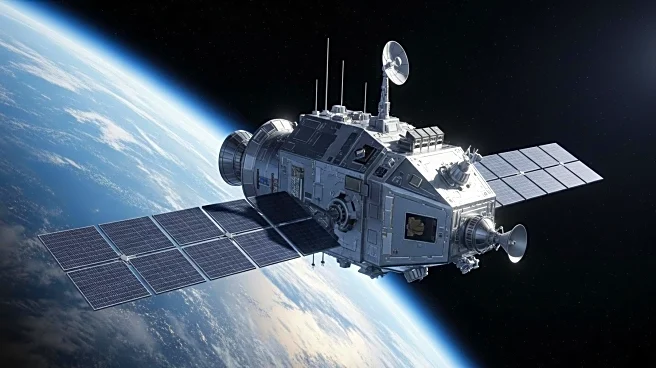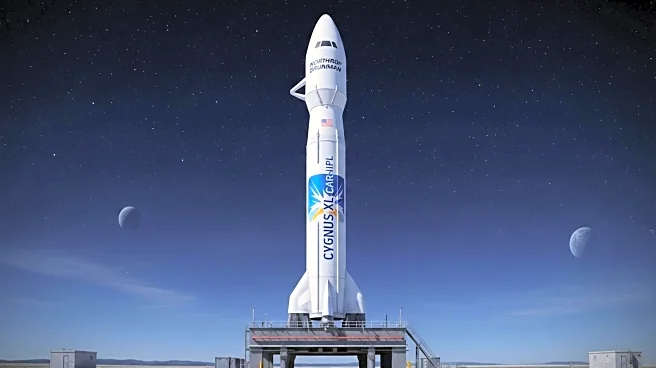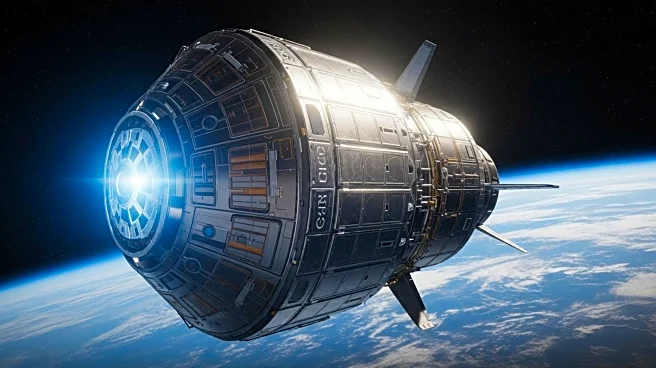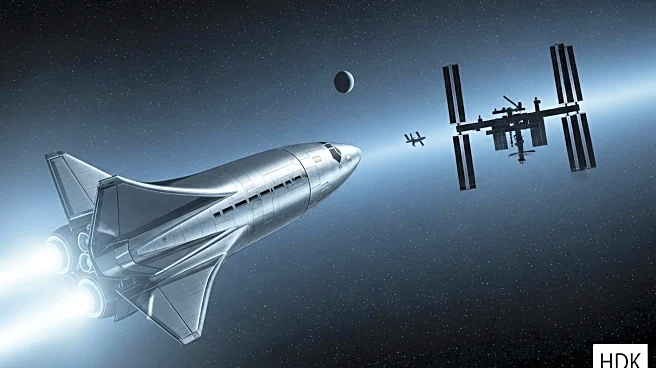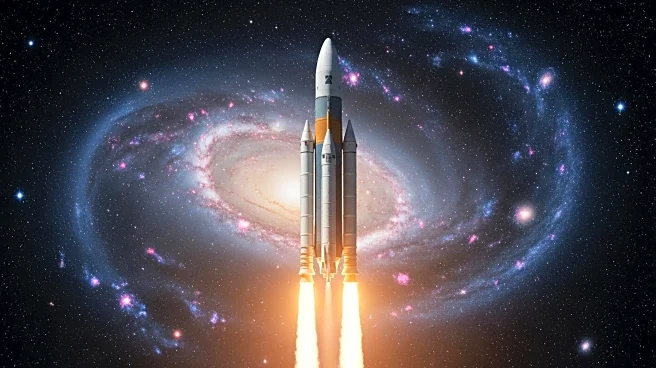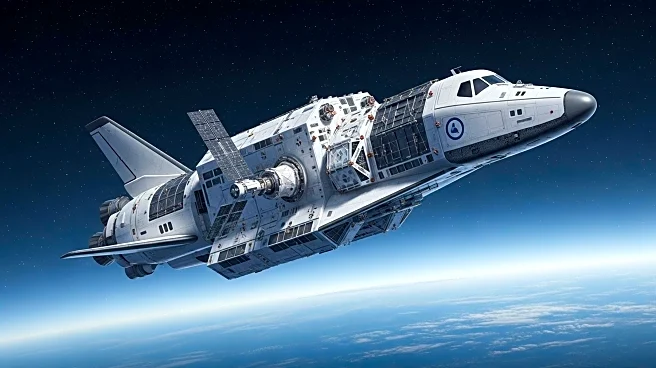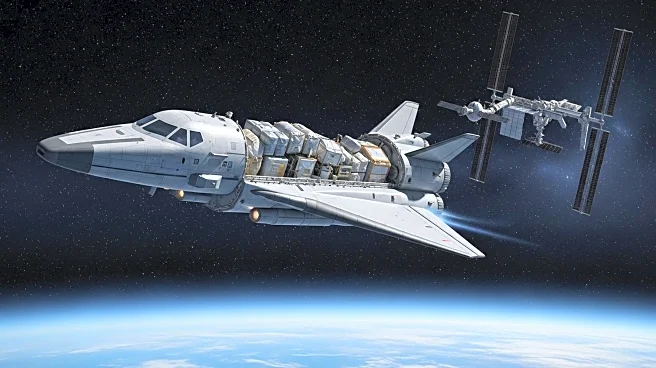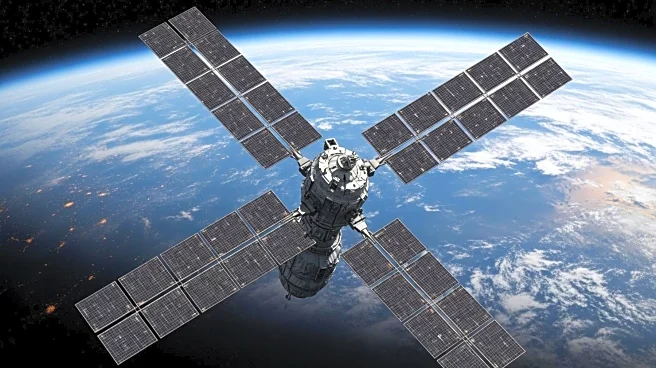What's Happening?
Northrop Grumman's Cygnus XL cargo ship, carrying over 11,000 pounds of equipment and supplies for the International Space Station, experienced two premature engine shutdowns on Tuesday. This issue forced flight controllers to interrupt a carefully planned rendezvous, delaying the ship's arrival at the space station. The Cygnus XL was launched from Cape Canaveral on a SpaceX Falcon 9 rocket and was supposed to be captured by the station's robot arm for berthing. However, the engine shutdowns occurred during burns intended to raise the spacecraft's orbit for the rendezvous. NASA reported that all other systems of the Cygnus XL are functioning normally, but the exact cause of the shutdowns is still unknown. Engineers are currently working to understand the problem and develop an alternative plan for the spacecraft's arrival.
Why It's Important?
The delay in the Cygnus XL's arrival at the International Space Station highlights the challenges faced in space logistics and the importance of reliable cargo delivery systems. The Cygnus XL is crucial for delivering essential supplies, spare parts, and research materials to the space station, which supports ongoing scientific experiments and the well-being of the crew. Any delay in these deliveries can impact the station's operations and the schedule of scientific research. Additionally, this incident underscores the complexities involved in space missions and the need for robust contingency plans to address unexpected technical issues. The successful resolution of this problem is vital for maintaining the supply chain to the space station and ensuring the continuation of its mission.
What's Next?
Engineers are currently reviewing the situation to determine the cause of the engine shutdowns and to develop a new plan for the Cygnus XL's rendezvous with the space station. A new arrival date and time are under review, and it is expected that once the issue is resolved, the spacecraft will proceed with its mission to deliver the much-needed supplies to the station. The outcome of this situation will be closely monitored by NASA and Northrop Grumman, as it may influence future cargo missions and the development of new boosters by Northrop Grumman.

